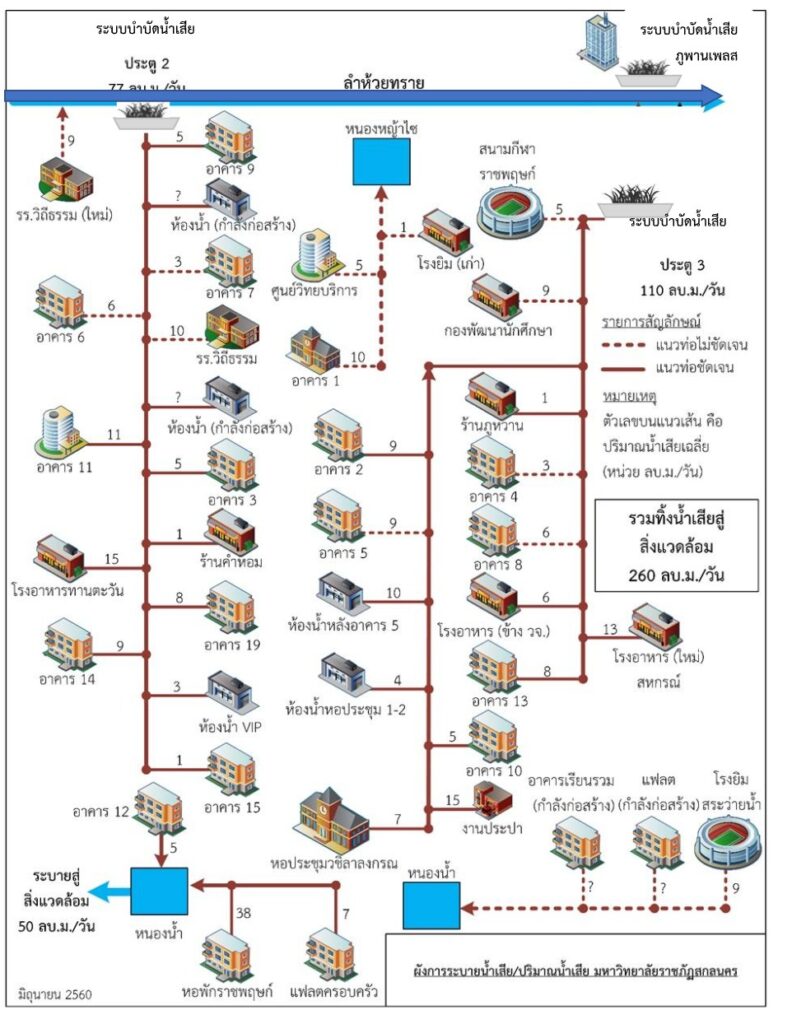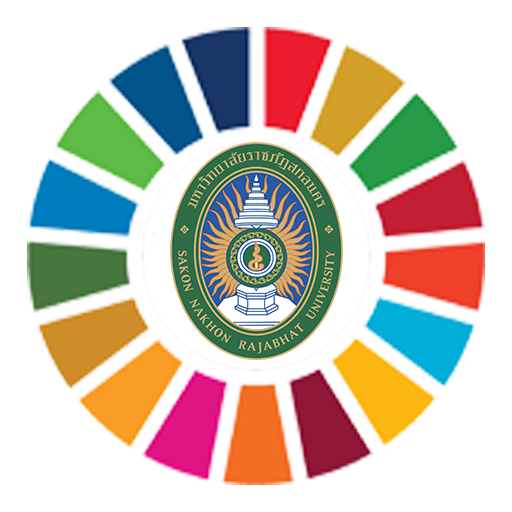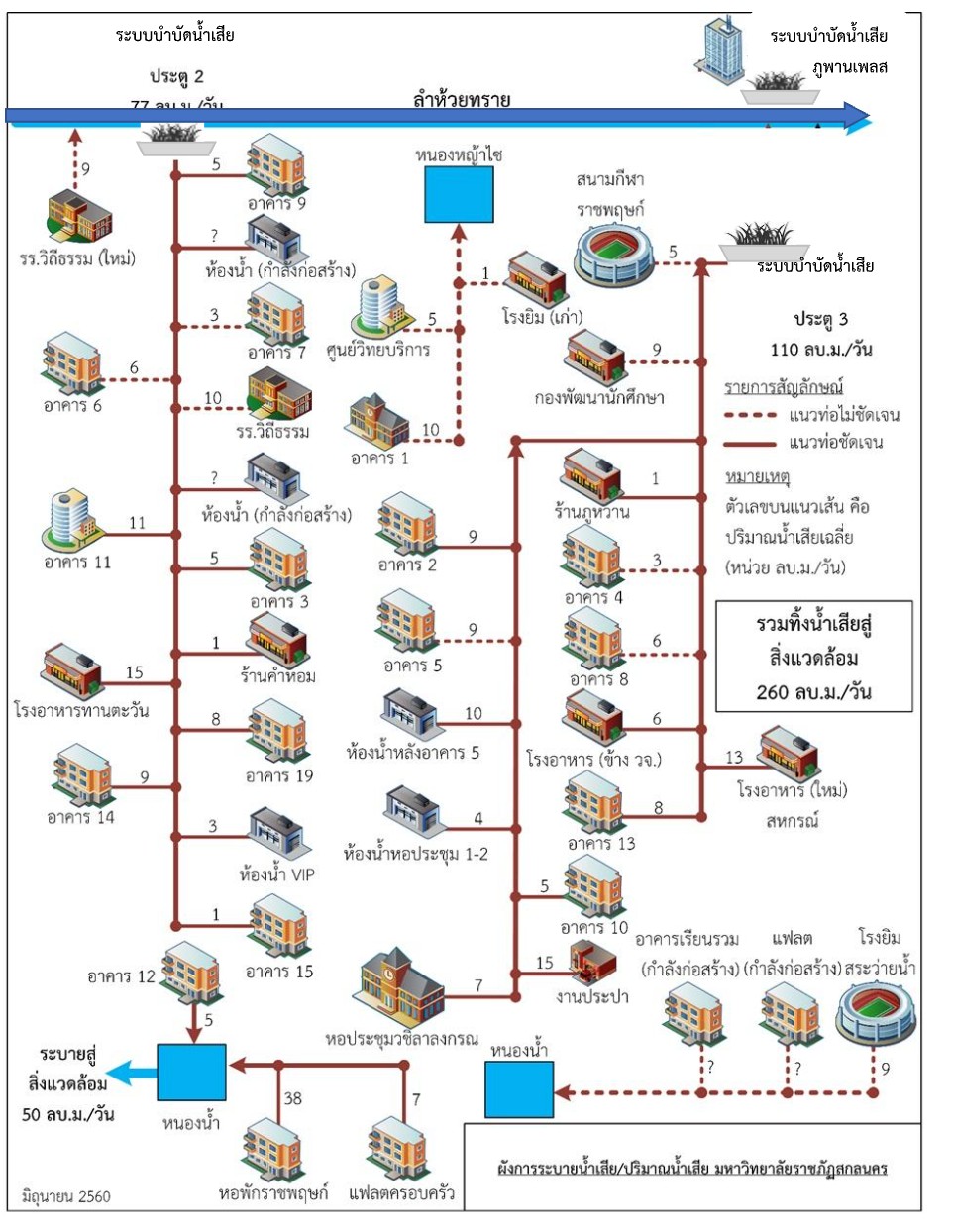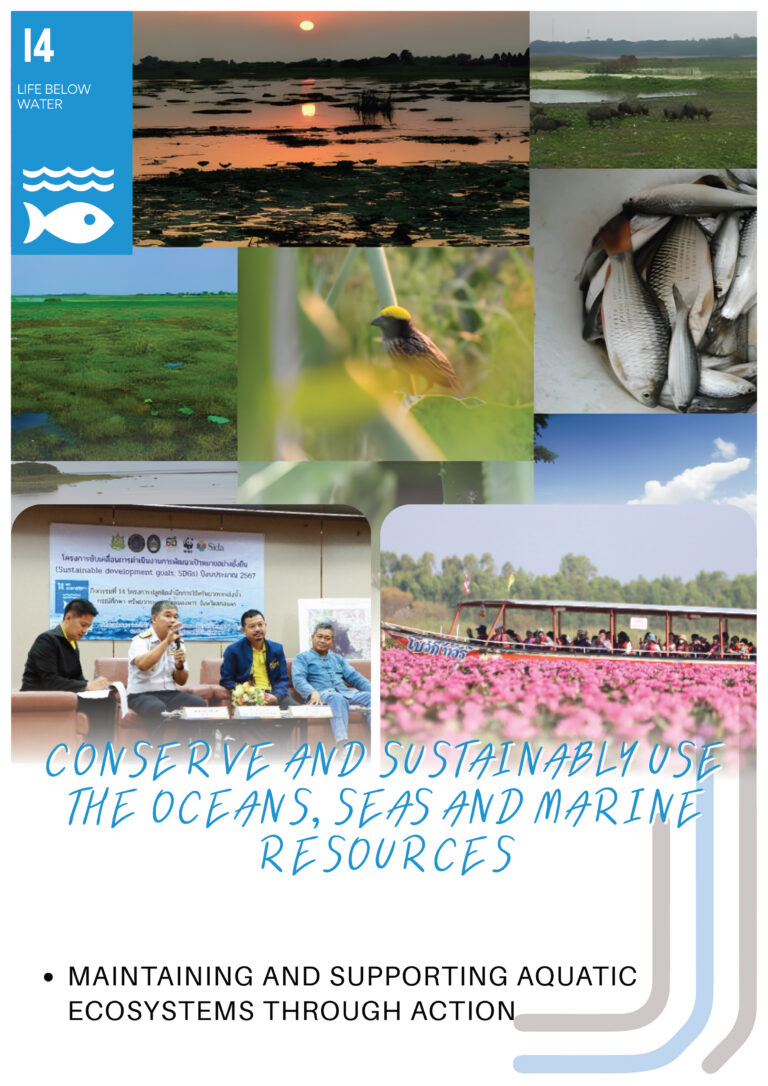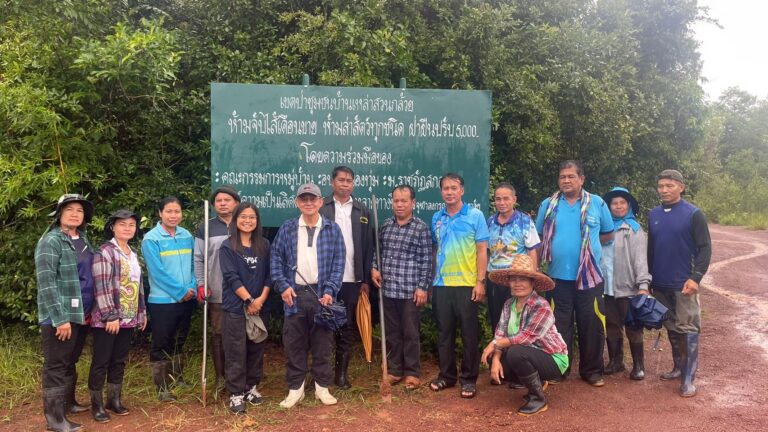According to the layout, wastewater generated from various buildings—including classrooms, dormitories, dining halls, and administrative offices—is directed into a centralized pipeline network that transports wastewater to different treatment stations. The map categorizes treatment into various phases, with specific discharge points marked as “Prasup 2” and “Prasup 3,” indicating areas where wastewater is pre-treated before moving on to larger processing systems.
Read more: The wastewater treatment system at Sakon Nakhon Rajabhat University is a structured network designed to collect and treat wastewater across multiple campus facilities, ensuring adequate water management and environmental conservation.
The system can treat up to 260 cubic meters of wastewater per day. Treated wastewater from these primary treatment points flows into holding ponds for further sedimentation and filtration. The process concludes with water discharged to environmentally controlled zones or reused for non-potable purposes such as irrigation of campus greenery.
The design illustrates a commitment to sustainable water management by ensuring that all wastewater undergoes treatment to reduce environmental impact. By incorporating holding ponds and recycling water wherever possible, Sakon Nakhon Rajabhat University strives to conserve water resources and promote eco-friendly practices in alignment with environmental standards.
